What To Eat In Spain: Your Spanish Food Guide
Discover the flavors of Spain with our tantalizing blog about Spanish food. From mouthwatering paella to delectable tapas, immerse yourself in the rich culinary traditions of this vibrant country. Explore the diverse regional specialties.
Welcome, culinary explorers! If you're planning an adventure to Spain or simply looking to widen your gastronomic horizons, you're in for a treat. Spanish food is a vibrant mix of fresh, high-quality ingredients, traditional cooking methods, and bold flavors. In every bite, you can taste the country's rich history, diverse culture, and warm hospitality.
Spanish cuisine is a sensory experience that goes beyond merely satisfying your hunger. It's about slowing down, savoring every bite, and immersing yourself in the culture. From tantalizing tapas to decadent desserts, every dish tells a story—a story of the land, the people, and the traditions that bring them together.
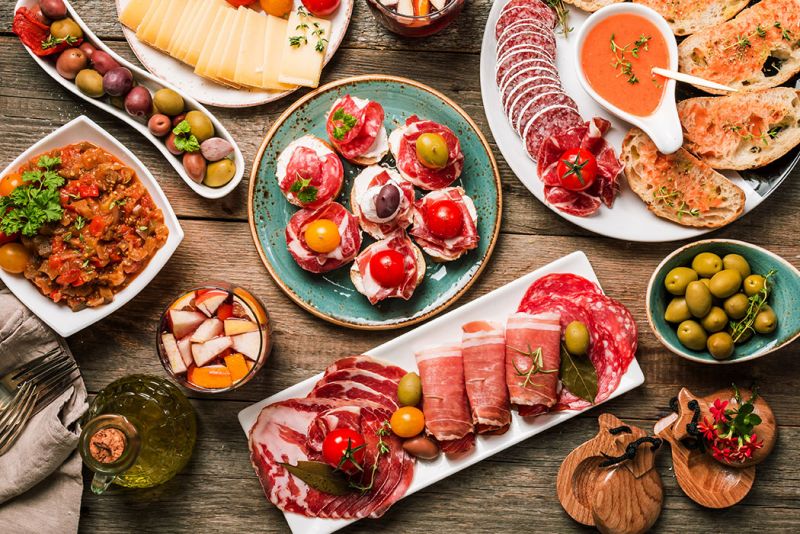
So strap on your metaphorical apron, grab a glass of sangria, and get ready to embark on a delicious journey through the world of Spanish food. Whether you're a seasoned foodie or a curious novice, you're sure to find something that will tantalize your taste buds and warm your heart.
The 5 Must-Try Spanish Main Dishes
If you're new to Spanish food, you might wonder where to start. Don't worry—we've got you covered! Here are five Spanish main dishes that you absolutely must try on your next adventure:
Paella Valenciana: This is the classic version of paella, originating from the region of Valencia. It's packed with chicken, rabbit, green beans, and butter beans, all cooked to perfection in a rich, saffron-infused broth.
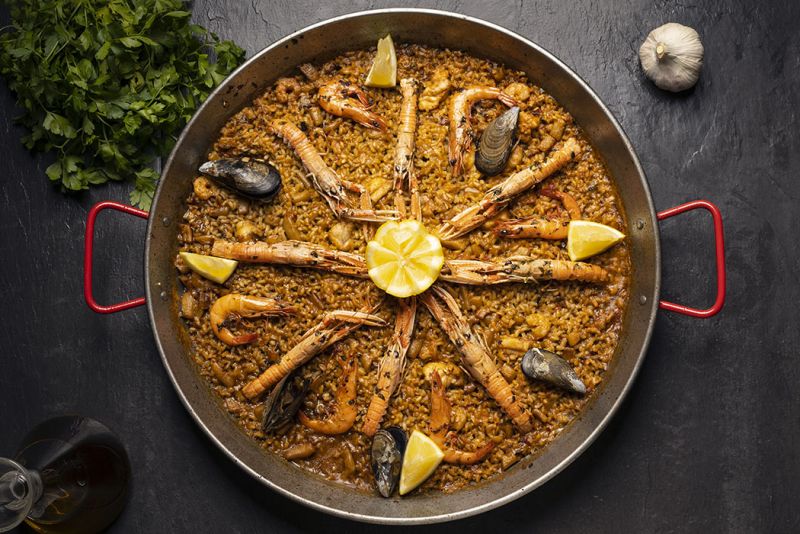
Tortilla Española: As mentioned before, this is a must-try Spanish dish. It's simple, comforting, and incredibly versatile. Enjoy it hot or cold, as a main dish or a snack.
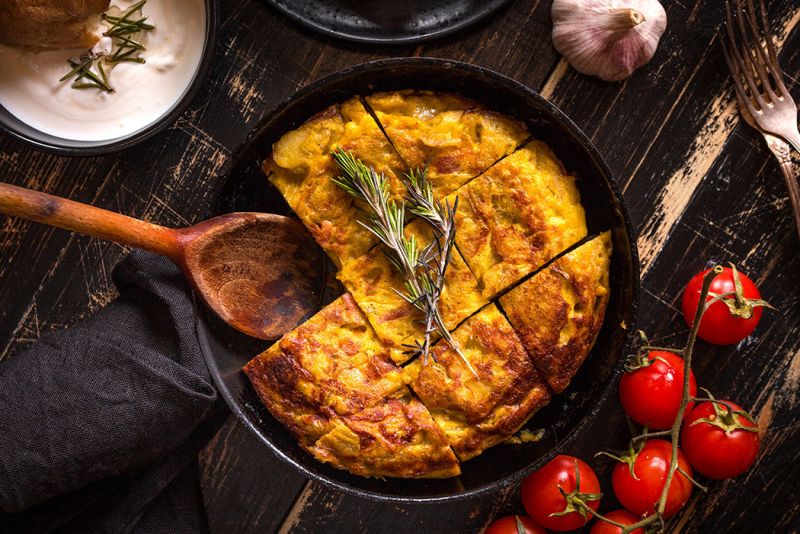
Cochinillo Asado: This mouth-watering roast suckling pig is a specialty of Segovia, a city northwest of Madrid. The meat is so tender that it can be cut with a plate!
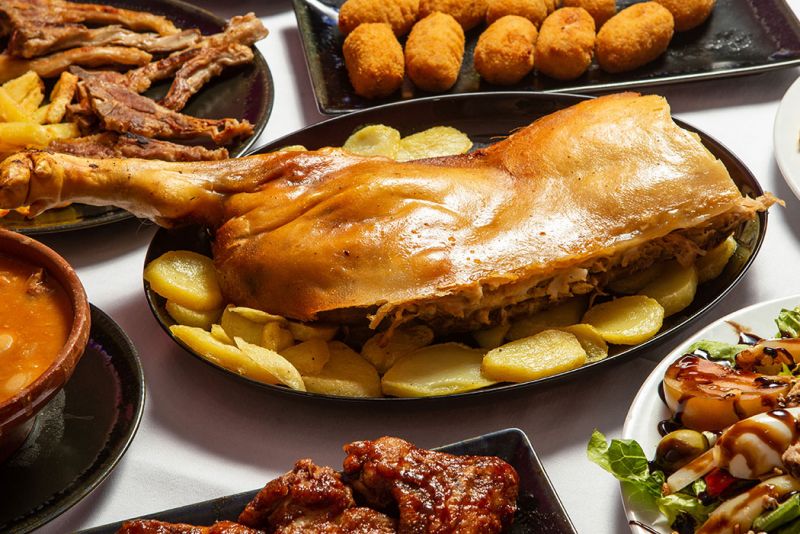
Fabada Asturiana: This hearty bean stew from the region of Asturias is perfect for cold weather. It's made with large white beans, chorizo, blood sausage, and pork belly.
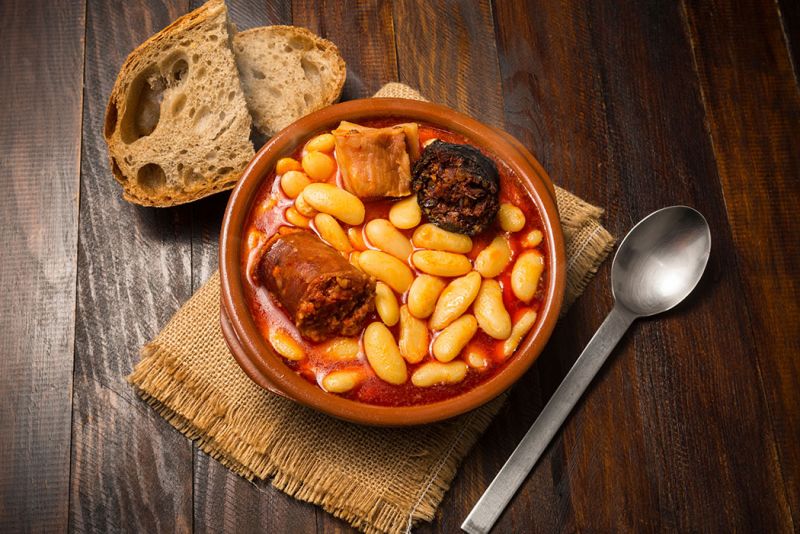
Gazpacho: This refreshing, cold tomato soup is a summer staple in Spain. It's made with ripe tomatoes, cucumbers, bell peppers, garlic, and stale bread, all blended and chilled.
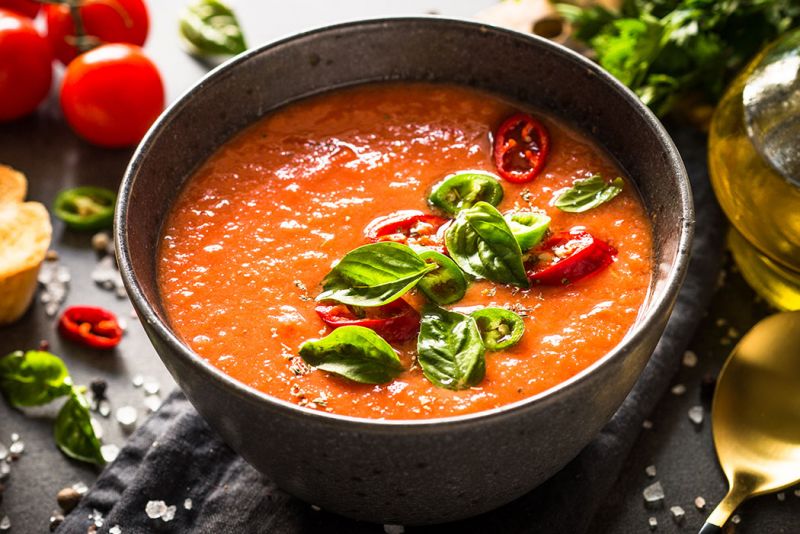
The Art of Spanish Desserts
Just when you think you couldn't possibly eat another bite, the dessert menu arrives. Spanish desserts are a delightful end to any meal, offering a sweet note that perfectly balances the savory flavors of the main dishes.
Spanish desserts range from light and refreshing to rich and indulgent. Some are made with fresh fruit, others with creamy dairy, and others with sweet pastry. Many Spanish desserts also feature the flavors of almonds and citrus, a nod to the country's Moorish heritage.
And let's not forget about the pastries. From flaky croissants to decadent churros, Spanish pastries are a treat for the taste buds. Whether you enjoy them for breakfast, as an afternoon snack, or as a sweet ending to a meal, they're sure to satisfy your sweet tooth.
The 5 Must-Try Spanish Desserts
Ready to satisfy your sweet tooth? Here are five Spanish desserts that are sure to leave you craving for more:
Flan: This creamy, caramel-topped custard is a staple in Spanish cuisine. It's smooth, sweet, and perfect for any occasion.

Churros con Chocolate: These deep-fried dough sticks are often enjoyed for breakfast or as a snack. Dip them in thick, rich Spanish hot chocolate for the ultimate treat.
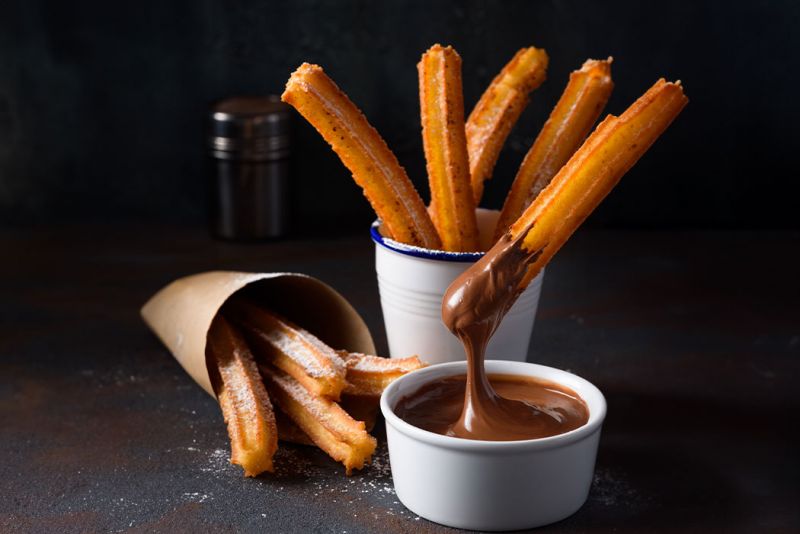
Tarta de Santiago: This almond cake from the region of Galicia is topped with powdered sugar and the cross of Saint James, the patron saint of Spain.

Turron: This traditional Spanish nougat comes in many varieties, from soft and chewy to hard and crunchy. It's typically enjoyed during the Christmas season, but it's delicious any time of the year.

Arroz con Leche: This Spanish version of rice pudding is made with short-grain rice, milk, sugar, and cinnamon. It's creamy, comforting, and delicious.
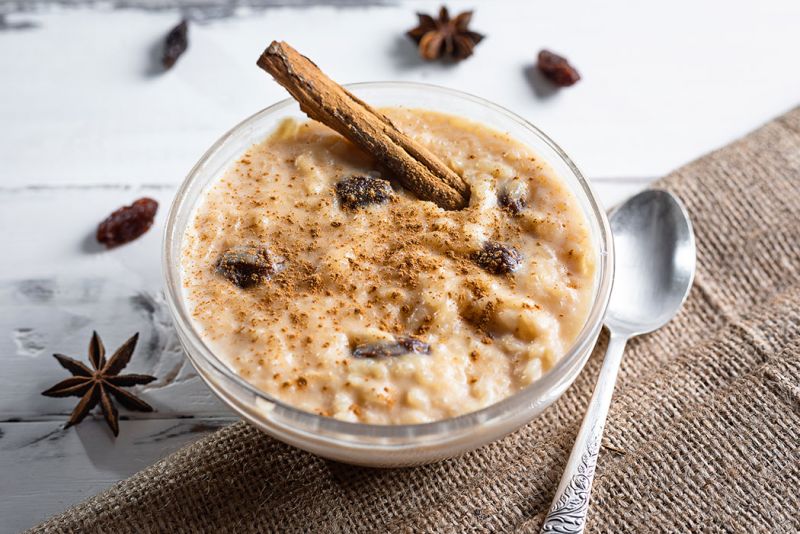
Lesser-Known Spanish Dishes You Can't-Miss
While the dishes mentioned above are well-known and beloved, many lesser-known Spanish dishes are just as delicious. These dishes may not be as famous, but they're worth seeking out.
Migas: This humble dish from the region of Extremadura is made with leftover bread crumbs, garlic, paprika, and pork products. It's a comforting, rustic dish that's perfect for cold weather.
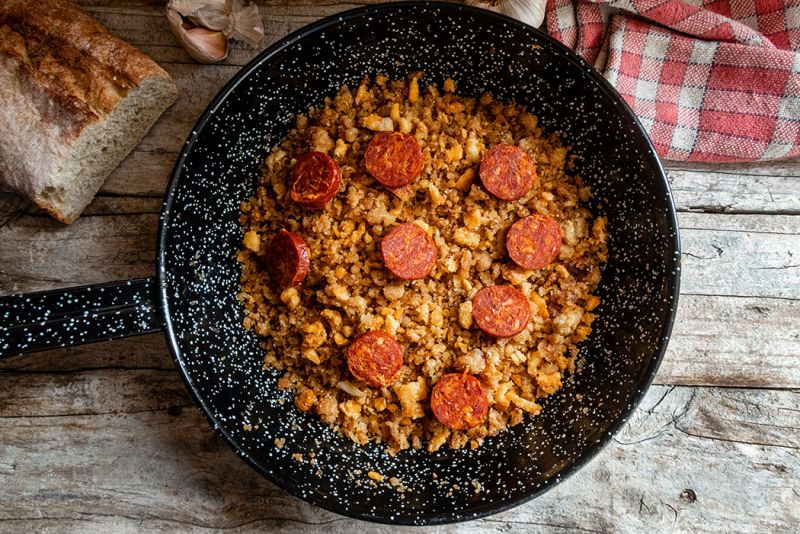
Calçots with Romesco Sauce: Calçots are a type of green onion that's popular in Catalonia, especially during the winter months. They're grilled over an open fire, peeled, and dipped in a nutty, smoky romesco sauce.
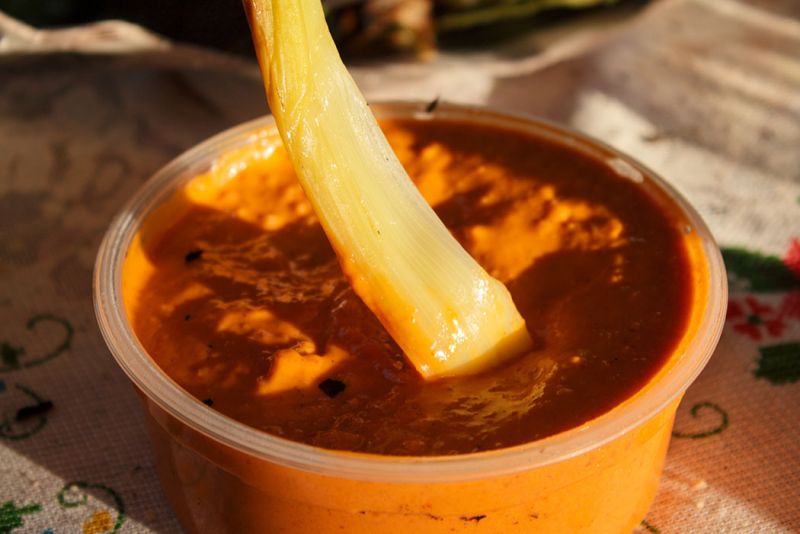
Rabo de Toro: This rich, slow-cooked oxtail stew is a specialty of Andalusia. The meat is tender and flavorful, and the sauce is perfect for mopping up with bread.
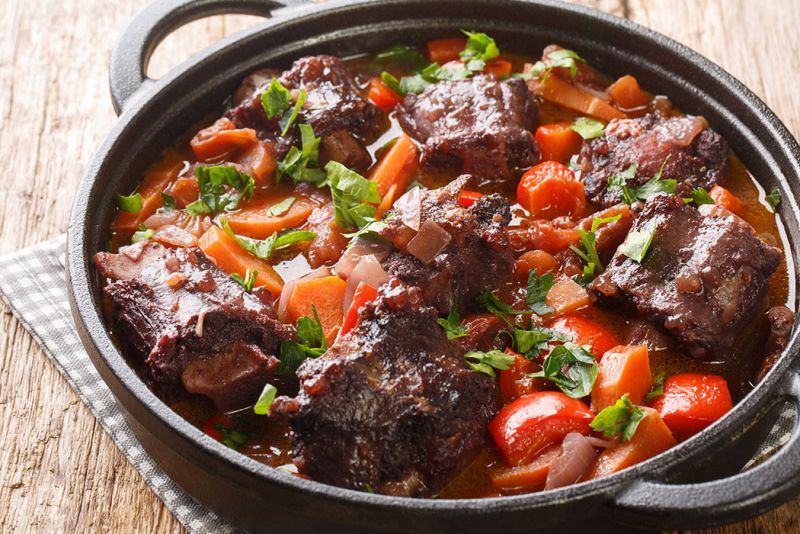
Pisto: Often compared to ratatouille, pisto is a vegetable stew from the region of Castilla-La Mancha. It's typically served with a fried egg on top.
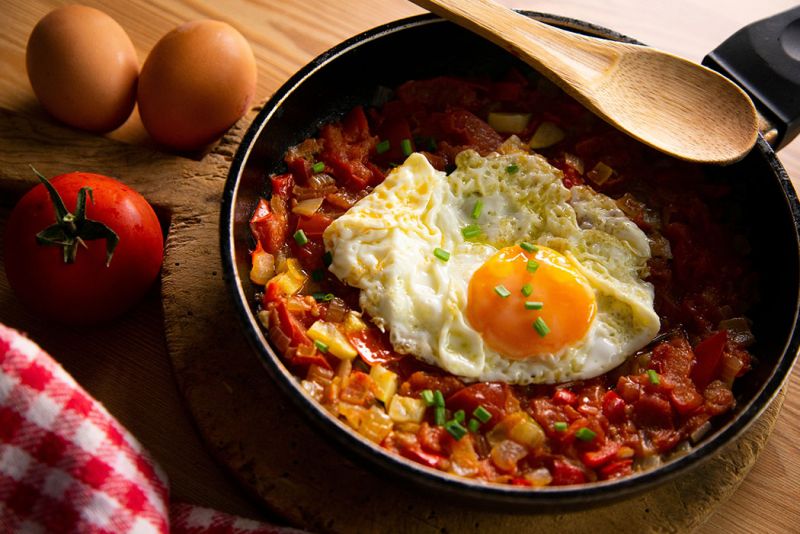
Pulpo a la Gallega: This octopus dish from Galicia is boiled, sliced, and served on a wooden platter with boiled potatoes, paprika, and olive oil. It's a must-try for seafood lovers.
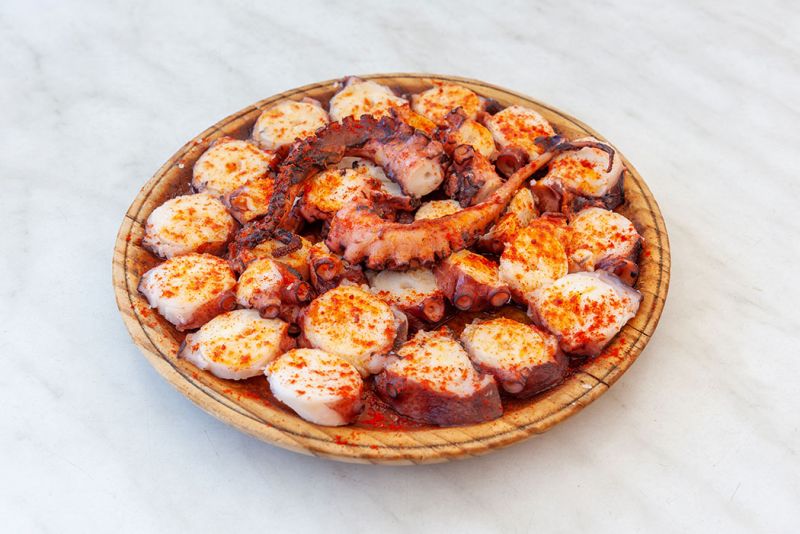
Seafood in Spanish Cuisine
Spain is surrounded by water on three sides, so it's no surprise that seafood plays a big role in Spanish cuisine. From the Atlantic and Mediterranean coasts to the rivers and lakes inland, Spain is blessed with a bounty of fresh seafood.
Seafood in Spain is enjoyed in many ways. It can be grilled, stewed, fried, or even served raw as sashimi. Some of the most popular seafood dishes in Spain include paella de mariscos (seafood paella), gambas al ajillo (garlic shrimp), and pulpo a la gallega (Galician-style octopus).
Whether you're a fan of fish, shellfish, or cephalopods, you're sure to find a seafood dish in Spain that will make your taste buds sing. Just remember to savor every bite—it's not every day you get to enjoy seafood this fresh and flavorful.
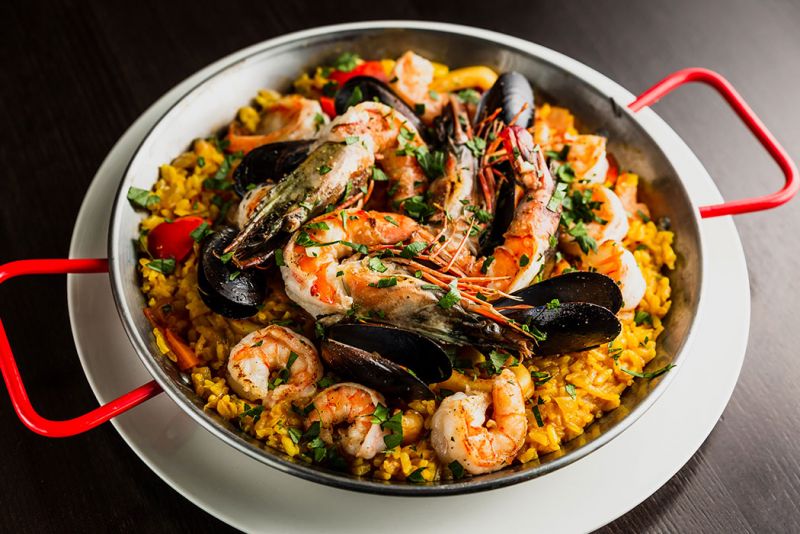
Vegetarian and Vegan Options in Spanish Food
While Spanish cuisine is often associated with meat and seafood, there are plenty of vegetarian and vegan options to explore. From vegetable-based tapas to hearty legume stews, Spanish food offers a wealth of delicious and nutritious plant-based dishes.
For example, the Spanish are masters at transforming simple vegetables into mouth-watering dishes. Think patatas bravas (spicy potatoes), pimientos de padrón (fried green peppers), and espinacas con garbanzos (spinach with chickpeas).
There are also plenty of legume-based dishes to choose from. Lentils, chickpeas, and beans are often used in soups and stews, providing a hearty and satisfying meal that's packed with protein and fiber.
And let's not forget about the fruit. Spain is known for its fresh, juicy fruit, which can be enjoyed on its own or used in desserts. From ripe peaches and cherries to sweet oranges and lemons, Spanish fruit is a treat for the taste buds.
So whether you're a vegetarian, a vegan, or just looking to eat more plant-based meals, you're sure to find plenty of delicious options in Spanish cuisine.
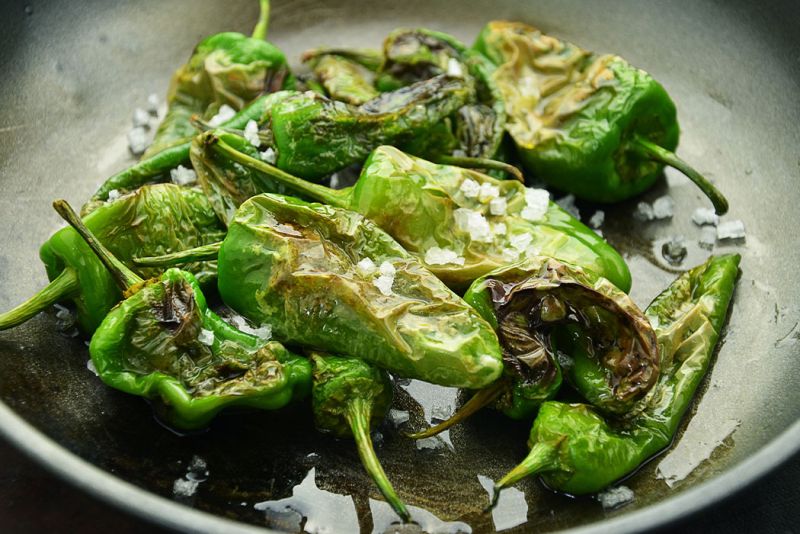
Exploring Regional Variations of Spanish Cuisine
Just as Spain's landscape varies from region to region, so does its cuisine. Each region has its culinary traditions, influenced by the local climate, geography, and history. This regional diversity is one of the things that makes Spanish food so exciting and diverse.
For example, the region of Andalusia is known for its fried fish, gazpacho, and sherry, while the region of Valencia is famous for its paella and citrus fruits. The region of Galicia is renowned for its seafood, particularly octopus and mussels, while the region of Basque Country is celebrated for its pintxos (similar to tapas) and cider.
So as you travel through Spain, be sure to try the local specialties. Each one is a delicious reflection of the region's unique culture and heritage.
Enjoy Spanish Food Like a Local
If you want to enjoy Spanish food like a local, there are a few things you need to know. First, Spanish meal times are typically later than what you might be used to. Lunch, the main meal of the day, is usually eaten between 2 pm and 4 pm, while dinner is often not until 9 pm or later.
Second, Spanish food is meant to be savored, not rushed. Take your time, enjoy each bite, and don't be afraid to use your hands—especially when eating tapas or seafood.
Third, don't forget to pair your meal with a glass of Spanish wine or a cold beer. And for a truly local experience, try ordering a vermouth, a fortified wine that's often served as an aperitif.
Finally, don't be afraid to venture off the beaten path. Some of the best food in Spain can be found in small, family-run establishments where the locals eat.

As you can see, Spanish food is more than just a meal—it's a culinary adventure. From the bold flavors and fresh ingredients to the rich history and vibrant culture, every bite is a taste of Spain.
Whether you're exploring the local markets, cooking your Spanish dishes at home, or dining out at a local restaurant, you're sure to fall in love with the unforgettable taste of Spanish cuisine. So go ahead—savor the flavor, and let your taste buds take you on a journey you won't soon forget.
Don't miss the Spanish cuisine during your Spain Tour!
